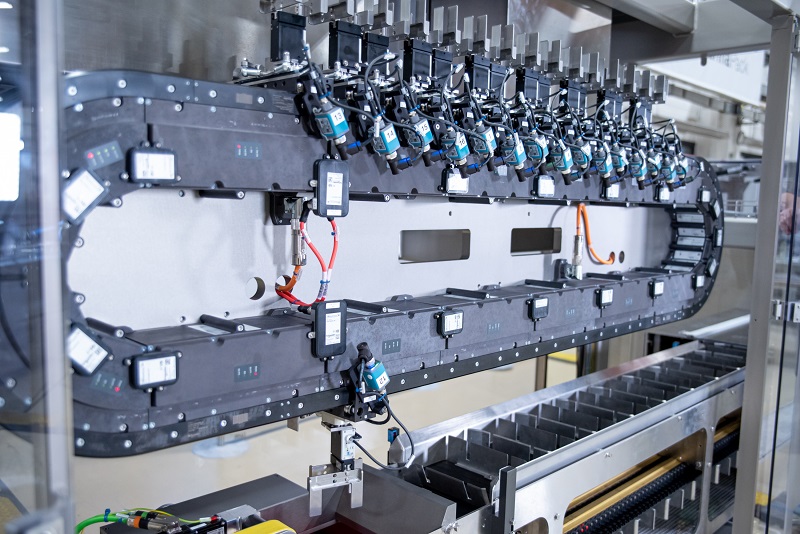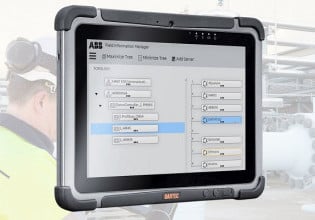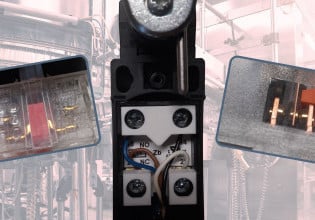Wireless IO-Link Technology Integrated Into Packaging Equipment
Rotzinger utilizes CoreTigo’s wireless IO-Link technology to create a packaging machine capable of dynamic changeovers while minimizing both cable infrastructure and downtime.
Rotzinger, a leader in automated cosmetic and packaging equipment, recently faced a customer request for a food packaging machine that required a high throughput and support a variety of different products. Rotzinger knew this request would require some advanced technology, so they reached out to CoreTigo, a supplier of industrial communications, whose line of wireless IO-Link technology might be able to provide the necessary I/O without bulky cables and allow for fast changeover of tooling.

Rotzinger’s application of CoreTigo wireless IO-Link products for manufacturing. Image used courtesy of CoreTigo
IO-Link Technology
IO-Link is an industrial protocol that takes discrete inputs, discrete outputs, or IO-Link devices and sends the status or control over ethernet protocols like Ethernet/IP or ProfiNet. The advantage of using IO-Link is the ability for enabled devices to transmit diagnostic information as well as accept configurations over industrial protocols.

CoreTigo’s wireless IO-link devices and web portal. Image courtesy of CoreTigo
IO-Link Wireless
CoreTigo currently has an existing line of wireless IO-Link devices that are designed to work in industrial applications. The wireless product line ranges from control and monitoring to sensors and actuators. The TigoMaster product line allows for wireless IO-Link master functionality to be embedded into virtually any industrial device. The TigoHub i4 is a multiport I/O hub that connects wirelessly to IO-Link masters and provides up to 4 IO-Link devices.
CoreTigo also has a line of IO-Link bridges, these are devices that can convert an existing wired IO-Link device into a wireless IO-Link device. The bridge has an internal antenna and two M12 connectors, when a device is connected to the bridge, a wireless master can then connect to the device using the wireless IO-Link technology.
Just like most other IO-Link masters and hubs, the Tigo product line can be combined and configured in various ways to increase the overall I/O capability.

Wireless IO-Link devices and speed up deployment and troubleshooting time. Image used courtesy of CoreTigo
Flexible Packaging Equipment
Automated equipment is expensive and the return on the capital investment can sometimes be a long process, so equipment manufacturers are constantly being challenged to make equipment as flexible as possible. One way to increase flexibility is with interchangeable tooling, but changing over equipment takes time, leading to lost production time.
To help speed up the lengthy manual tool changeover process, Rotzinger has made use of wireless IO-Link technology by using grippers on a servo-driven conveyor. Without the need for cables, the product grippers were able to be mounted directly on the moving shuttles, and with CoreTigo’s TigoBridge actuators, wireless control is achieved. This allows the machine to package single or double product packages without any downtime of the equipment by simply batching the shuttles into their single or double configurations.
Retrofit Equipment
Adding to existing equipment is becoming a popular solution instead of buying new equipment, especially when adding data collection to existing lines. Older equipment may not have the required signals or sensors to properly collect machine efficiency data. Using wireless IO-Link technology reduces the impact on the existing equipment by not having to run signal cables or interface with the existing PLC.
The TigoGateway is an IO-Link master that is capable of utilizing popular IIoT protocols for edge computing applications. Making use of a wireless IO-Link technology allows machine builders to add to existing equipment or facilitate flexible equipment with reduced changeovers.






